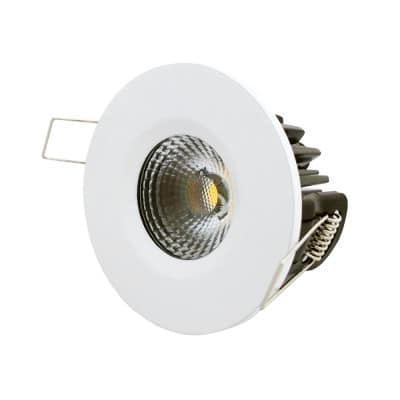
But how many?
What if you don’t currently have any downlights – how many do you need to adequately light a room?
Firstly, particularly in a room such as a kitchen, the location of cupboards, especially wall cupboards needs consideration; it would be pointless to install a downlight over the top of a wall cupboard. Standard kitchen floor cupboards are usually 600mm deep so start at least 600mm from the wall. Then, place the others between 900mm and 1200mm apart.
A rough reckoner says divide the square area of the ceiling (in metres) by 1.9 to calculate the number of downlights required.
So, a room 5m x 3m would work out at 15÷1.9 = 7.894. Rounding up would give 8.
This would space each downlight 1 metre from the walls and also from each other in a 4 x 2 pattern. This arrangement will minimise shadows cast by the floor units. Work surfaces are probably best lit by under shelf strip lights or the popular triangular LED fittings for corners. This type of arrangement makes it easier to see when working as there will be less shadow cast by anyone using the room from the overhead lighting.
The same considerations apply to other rooms where it is advisable to review the furniture arrangement when calculating the location of downlights and working out how many to install. A regular pattern of downlights in the ceiling will look more pleasing to the eye whether it be square or diagonal. It is also advisable to consider installing additional occasional lighting in appropriate areas to create a pleasant ambiance within the room.
So now you know how many you need, why not check out our range of low energy downlights.

Pingback: LED replacement bulbs for recessed spot and downlights | My Green Lighting